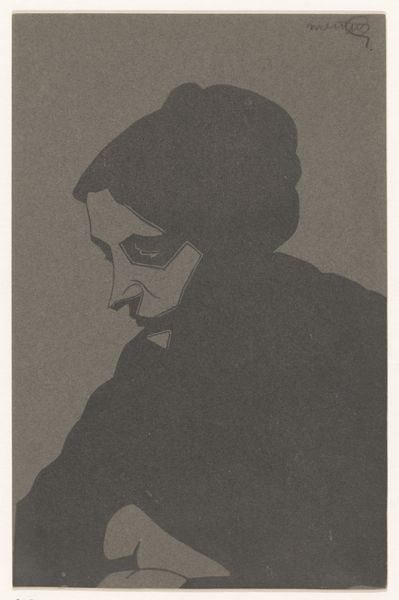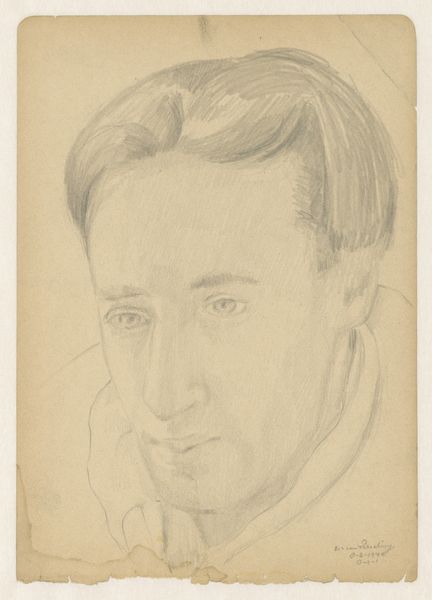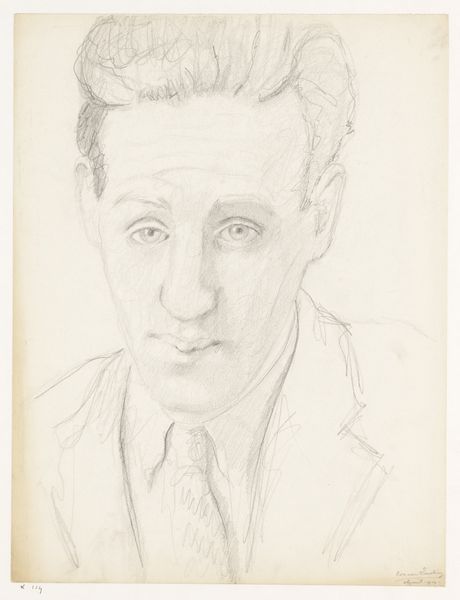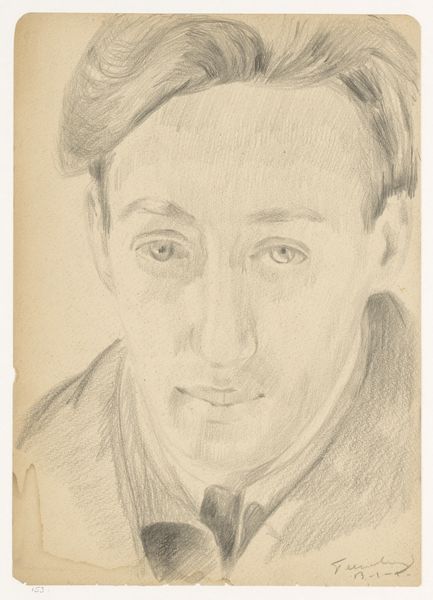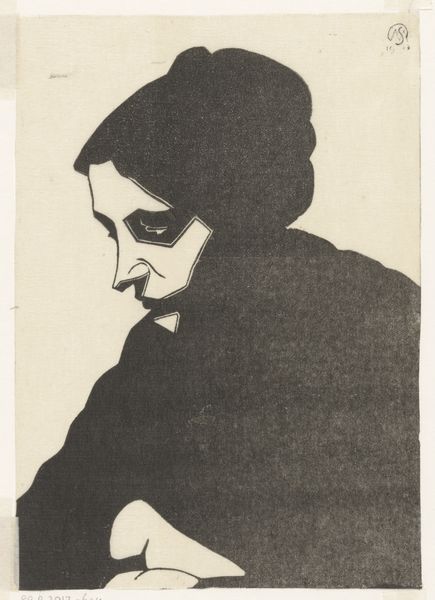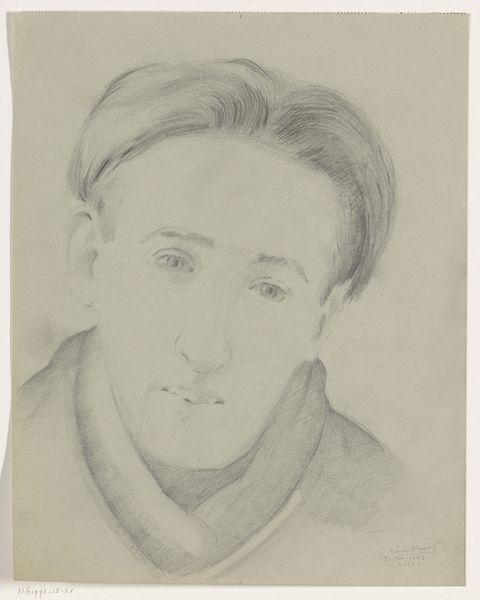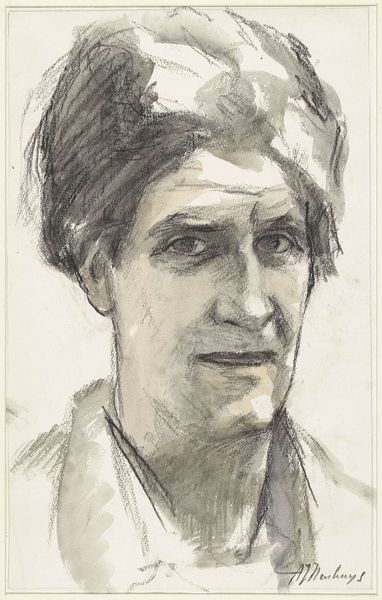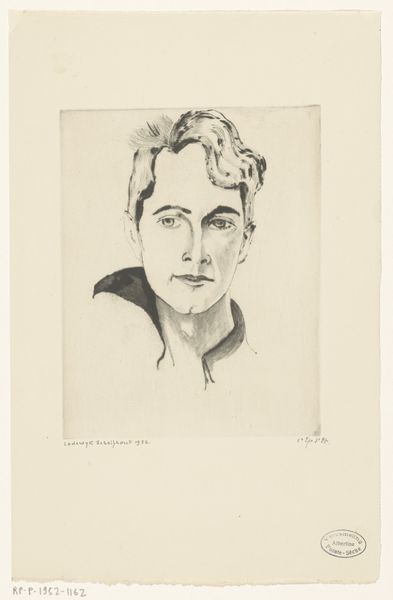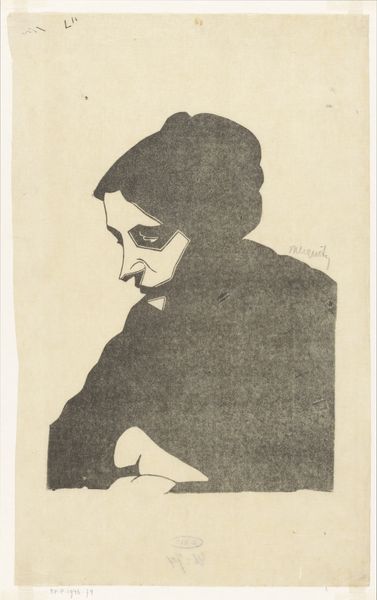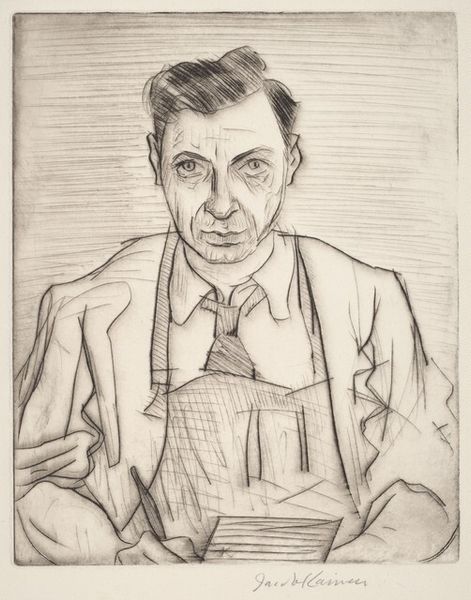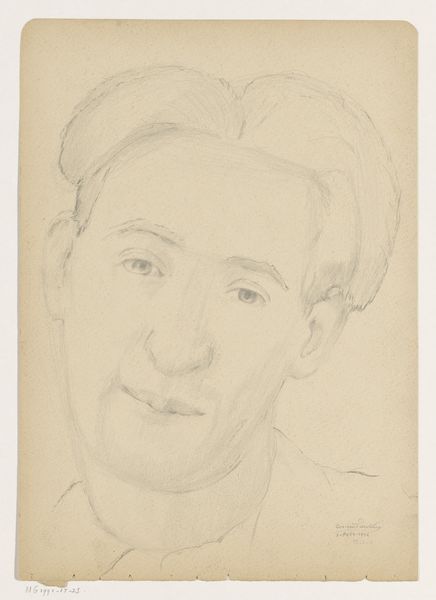
Georgia O'Keeffe—After Return from New Mexico or Equivalent O1 1929
0:00
0:00
photography, gelatin-silver-print
#
portrait
#
self-portrait
#
black and white photography
#
photography
#
gelatin-silver-print
#
monochrome photography
#
monochrome
#
modernism
#
monochrome
Dimensions: sheet (trimmed to image): 7.8 x 11.7 cm (3 1/16 x 4 5/8 in.) mount: 34.8 x 27.4 cm (13 11/16 x 10 13/16 in.)
Copyright: National Gallery of Art: CC0 1.0
Curator: It's intriguing to observe this work through a feminist lens; what stories can be revealed about O'Keeffe's complex relationship with her own image and the male gaze in art history? Editor: Before we delve deeper, perhaps it is worthwhile to start with some information. This gelatin silver print is titled, "Georgia O'Keeffe—After Return from New Mexico or Equivalent O1," crafted by Alfred Stieglitz in 1929. I'm immediately struck by its pensive mood. There's a certain weariness etched in her face, a somber quality. Curator: Yes, the image carries a profound weight. Stieglitz’s portrayal of O’Keeffe prompts considerations regarding their marital dynamic, their professional association, and their engagement in creating performative personas through the use of self-portraiture as a conceptualisation of identity. New Mexico looms large; the stark, desolate beauty of the American Southwest serving as an escape from the New York art world dominated by Stieglitz. Editor: The photographic style and its implications are, in my opinion, very pertinent. It's interesting how Stieglitz—a towering figure in American photography who promoted modern art through his gallery "291"—chose such a stark and almost unadorned approach. How much did his understanding of the cultural significance of O’Keeffe contribute to how he presented her, publicly? Curator: It prompts reflection upon gender dynamics within the art world during this epoch, challenging presumptions around male authority and female subjecthood. It certainly suggests Stieglitz deliberately intended on crafting her identity and public presence to ensure O'Keeffe's iconic position was promoted within the broader cultural milieu. Her stern and contemplative expression and modest clothing diverge from typical romantic portrayals and evoke discussions surrounding her agency in visual depiction. Editor: True. It’s also striking that he chooses to frame her against what appears to be the window of an automobile or train car. The window acts like another picture frame; it is reminiscent of his other photos of buildings and windows within New York. This adds another layer of interpretation as an icon of American modernism constantly traveling, in transition, between New Mexico and New York and from natural landscapes and cityscapes. Curator: Exactly. The image’s potency resides not solely within its artistic qualities but also as an artifact of cultural memory. It encapsulates identity, gender, and artistic self-discovery, inviting interpretation in connection to wider feminist discussions and discourse that considers performative personas constructed through art-making. Editor: Well, considering the historical setting and your perspectives, I certainly have a greater awareness of the portrait’s social and gendered significance.
Comments
No comments
Be the first to comment and join the conversation on the ultimate creative platform.
